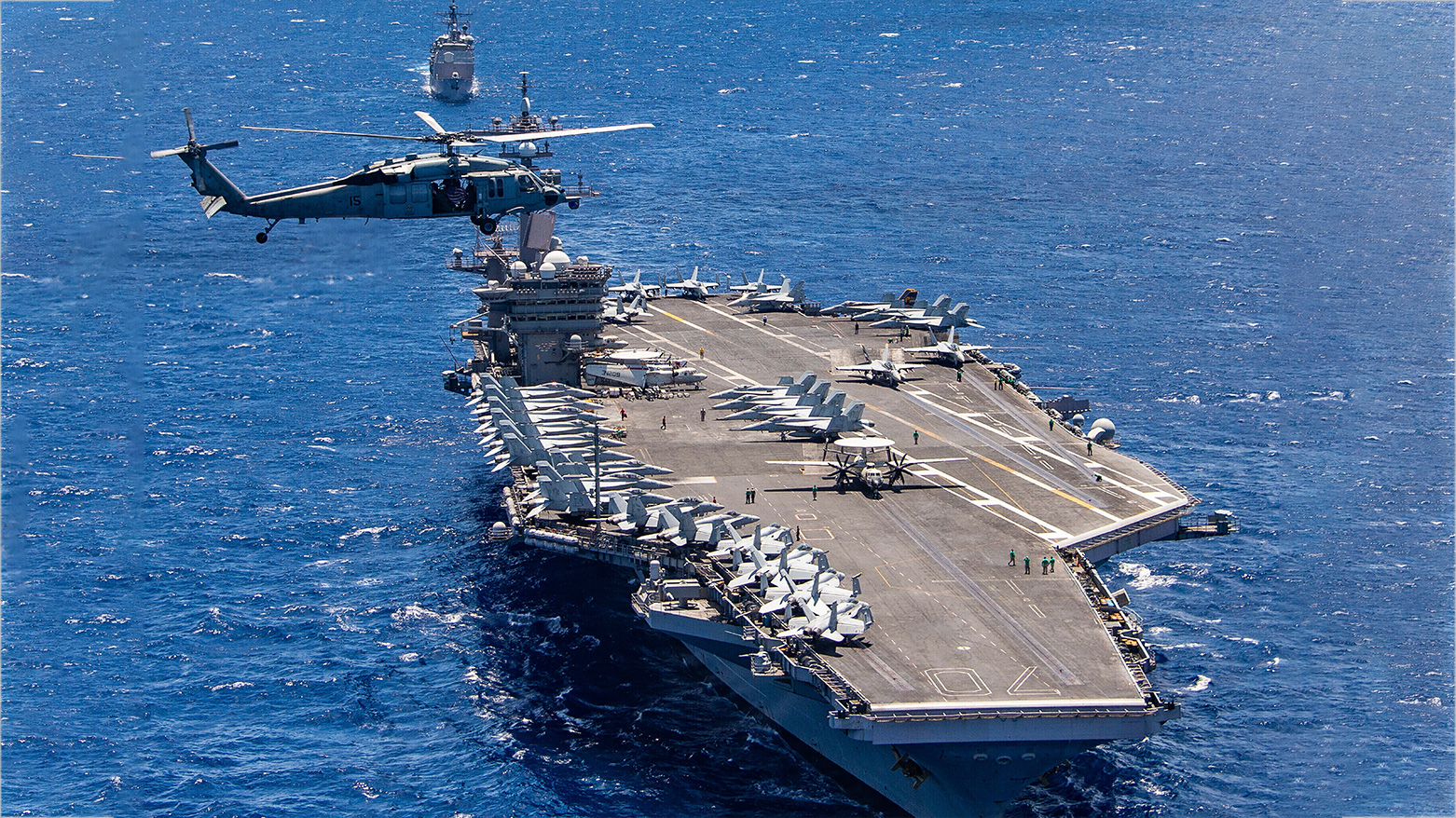Second U.S. Aircraft Carrier Joins Middle East Operation Targeting Houthis
The U.S. State Department warned foreign states and commercial entities against supporting the Houthis by offloading ships or provisioning oil at Houthi-controlled ports. "Such actions risk violating U.S. law," the statement said.

By Kamaran Aziz
ERBIL (Kurdistan24) — In a dramatic show of force amid escalating regional tensions, the United States has deployed a second aircraft carrier to the Middle East to safeguard vital commercial shipping routes, as American forces ramp up their offensive against the Iran-aligned Houthis in Yemen.
The U.S. Central Command (CENTCOM) announced on its official X account that the USS Carl Vinson (CVN 70), equipped with advanced F-35C Lightning II fighter jets, has joined the USS Harry S. Truman (CVN 75) in the Central Command's area of responsibility.
The deployment underscores Washington's deepening involvement in regional security operations and its determination to secure maritime stability in the face of rising Houthi aggression.
"Aircraft Carrier USS Carl Vinson (CVN 70) with its air wing consisting of F-35C Lightning IIs works alongside the USS Harry S. Truman (CVN 75) in the U.S. Central Command area of responsibility," CENTCOM posted.
Aircraft Carrier USS Carl Vinson (CVN 70) with its air wing consisting of F-35C Lightning IIs works alongside the USS Harry S. Truman (CVN 75) in the U.S. Central Command area of responsibility. pic.twitter.com/c2p4yxmBpj
— U.S. Central Command (@CENTCOM) April 10, 2025
Late in March, in a dramatic escalation of its military campaign in Yemen, the United States launched what officials called the most extensive wave of airstrikes to date, targeting more than 100 Houthi-linked positions across six Yemeni provinces. The overnight strikes marked the most violent single night in Yemen since U.S. operations began to deter Houthi aggression in the Red Sea.
American fighter jets and drones carried out at least 44 airstrikes in Sanaa, Saada, Al-Hudaydah, Al-Jawf, Amran, and Marib. According to U.S. officials, the campaign focused on degrading the Houthis' offensive capabilities and neutralizing key military infrastructure, including air defense systems, weapons depots, command centers, and maritime coordination facilities.
Speaking to The Wall Street Journal, a U.S. military official confirmed that several high-ranking Houthi commanders were killed. However, the official noted the challenge in measuring impact due to the Houthis' efforts to downplay losses and exaggerate retaliation. "It is largely because of the nearly 10 years of support provided by Iran," he said.
On Thursday, the U.S. State Department reiterated its stance on holding the Houthis accountable. "On March 5, 2025, the State Department designated Ansarallah, commonly referred to as the Houthis, as a Foreign Terrorist Organization (FTO), fulfilling one of President Trump’s first promises upon taking office," said spokesperson Tammy Bruce.
As outlined in Executive Order 14175, the Houthis’ activities "threaten the security of American civilians and personnel in the Middle East, the safety of our closest regional partners, and the stability of global maritime trade."
The State Department warned foreign states and commercial entities against supporting the Houthis by offloading ships or provisioning oil at Houthi-controlled ports. "Such actions risk violating U.S. law," the statement said, hinting at future sanctions or punitive measures.
The Houthis, backed by Iran, maintain an extensive arsenal of missiles and drones, hidden in rugged terrain and underground facilities. The White House confirmed that the latest strikes aimed at Houthi leadership, air defenses, and weapons sites.
While the Houthi-affiliated Al-Masirah outlet reported dozens of airstrikes across Yemen’s provinces, U.S. officials highlighted that operations will persist until safe passage through the Red Sea is secured.
Observers quoted by The Wall Street Journal cautioned that airpower alone may not suffice to dismantle the Houthis, a group that has survived nearly a decade of Saudi-led bombardment. Analysts argue that the Houthis' asymmetric tactics and resilience complicate efforts to end their campaign.
In a revealing shift, The Telegraph reported that Iran, under pressure from the renewed U.S. strikes, has ordered the withdrawal of its military personnel from Yemen and severed ties with the Houthis to avoid direct confrontation with the U.S. A senior Iranian official confirmed this move, stating, "If an Iranian soldier died under a U.S. strike, everything would change."
Iran’s withdrawal reflects a broader recalibration of its regional proxy strategy, which historically included Hezbollah and militias in Syria and Iraq. The U.S. campaign, reinforced by daily bombardments from carriers like the USS Truman and Carl Vinson, has included the deployment of A-10 Thunderbolt II aircraft and other assets.
This policy marks a departure from the Biden administration, which delisted the Houthis as a terrorist group in 2021—a move President Trump reversed immediately upon returning to office.
Adding complexity to the conflict, The Telegraph noted that a Russian military expert is now advising the Houthis in Sanaa, helping them target U.S. assets while avoiding escalation with Saudi Arabia.
Despite Houthi claims of striking U.S. naval forces, American officials confirmed that no vessels have been hit. However, the threat is considered the most sustained since World War II.
Iranian regime sources now describe the Houthis as a weakened force. "They are living their final months or even days," one source told The Telegraph, adding that the Houthis no longer fit within Iran's evolving regional strategy.
The Biden-era approach of caution has been replaced by Trump’s aggressive "Maximum Pressure" campaign. According to Chatham House analyst Sanam Vakil, "Trump is trying to prove that he is more effective at ending and solving conflicts than the Biden administration was."
Former Yemeni diplomat Mahmoud Shehrah added that the new strategy focuses on eliminating Houthi leadership. Despite military advantages, Shehrah warned the group faces internal collapse: "They are not paying salaries and impose extreme taxation with zero representation."
Since October 7, 2023, the Houthis have positioned themselves as a frontline in the so-called Axis of Resistance. Controlling much of Yemen and functioning as a de facto state, the group finances operations through illicit means while pursuing regional influence.
